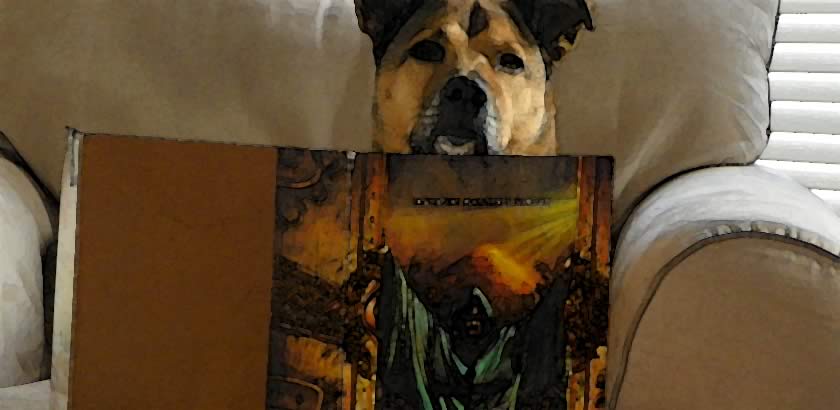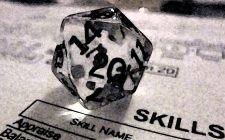Geek and Sundry recently put out a tutorial for a home-made dungeon screen that looked like a castle. It made me want to get crafty. I normally don’t use screens though, so I thought about how I would run a game with it.
I imagined finding a way for the players’ side of the screen to evoke the setting. In my daydream, the players felt more immersed than usual looking at the imagery rather than my neon orange clipboard. I plotted ways to it configurable so I could switch out the artwork to match the adventuring location. On the inside would be the practical reference materials that I currently stored in my clipboard. A list of skills, mostly, since I had been playing with the rules long enough that I didn’t need a cheat sheet to remember how they worked. I imagined myself being more efficient in sessions, referencing details without flipping through pages.
But when I did a run through, I ran into problems. I had borrowed a GM screen from a friend to test; but I found I couldn’t see over it while sitting down. (I’m just short. Not so short that it’s a medical issue, but short enough that I’m usually only taller than school kids and restaurant hostesses.) Also, I was in constant danger of knocking the screen over as I moved NPCs. I could reach some of them if I stood, but my boobs would take out the screen, which would domino-effect down to the battlemat. I considered making a half-height screen, but I then I had an epiphany.
GMs can be divided clearly their use of GM Screens.
I know, you probably thought politics, age, stance on D&D4e, adherence to in-character RP, or snack food encouragement habits might have been more crucial demarcations of our community. But I tell you, it’s the screens. Here me out now, because this theory is only partially in jest.
You see, whether or not you use a GM screen implies a lot about your GMing style. Because it’s not simply the screen itself, but what it implies.
Screen
- The physical barrier also creates a psychological barrier between the GM and the players.
- It allows the GM to fudge the dice.
- It encourages the GM to keep secrets.
- And makes it clear to their players that their GM has secrets.
- It also sort of implies that the GM needs aids to keep the players from peeking at the secrets.
- On the other hand, it also allows the GMs to decorate and put something evocative there as an aid to imagining the scenery.
vs No Screen
Screen-less GMs, on the other hand, have no screen. This part is obvious. But they’re also displaying the inverse mentality of the screen-using GMs.
- They make all rolls are openly, so they can’t fudge the dice. Players who prize fairness and challenge may prefer this. On the other hand, players who prefer a crafted narrative or knowing their GM will save them from death may not like it.
- The also can’t make secret rolls. If the GM rolls, the players know what and what the roll result was.
- They have to trust players to not peek at monster stats or other GM-only info. By not using the screen, they’re signalling that trust to their players.
- GMs either have to be comfortable letting players see when they need to look stuff up. They can’t subtly glance to a reference page just below their eye line. They have to clearly look in down.
- The lack of a screen puts the GM and the players on more of the same side. Screen-less GMs aren’t quite like the rest of the players, but they aren’t the wizards behind the curtain, either.
In the end I decided not to adopt a GM screen. At least not for now. I love the idea of that atmospheric artwork, so I’ll continue to search for alternatives. Maybe with a screen behind me, so the players and I can be on the same side of it.



